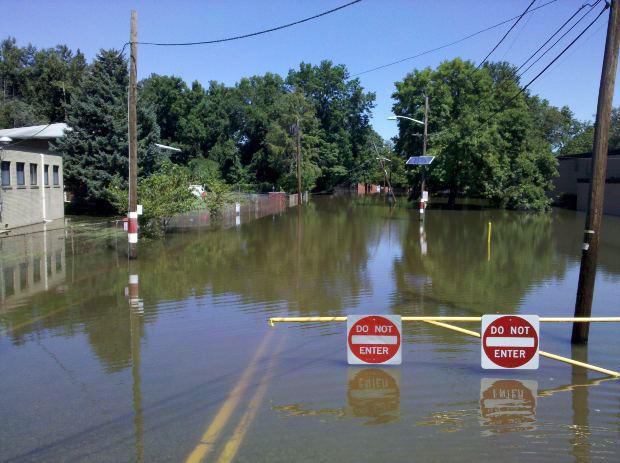If Mother Nature has proved anything this year, it’s that she can flood some of the most random areas at will. Water damage can take its toll on just about any object reducing it to useless trash. The same can be said for the home. Prolonged water damage can cause a variety of problems later on including the development of severe mold infestations.
Analyze the Damage Closely – Although you could have the flooded area mopped up, are you sure you have surveyed the actual damage thoroughly? Depending on how the flood occurred in the first place, there could be puddles of remaining water within walls, ceilings and floors that are the breeding grounds for mold. Without an in-depth examination of the area, you could be allowing mold spores to influence your home or business. It may be worth the extra time it takes to investigate the matter further.
Draining the Water Away – In a basement flood that is caused by appliance on the floor above, many people will take a screwdriver and poke drainage holes in the ceiling in order to alleviate some of the puddles that could accumulate. Although this is a temporary solution during the incident, it can help you greatly when it comes time to inspect the actual damage. While it’s not usually a good idea to leave water-damaged drywall in your ceiling, it could buy you the time you need to consider getting it replaced or having a professional take a closer examination of the area.
Letting Water Drain Itself – In some cases, property owners have allowed a flooded basement to simply dry itself out as the water slowly drains away through sewage lines. Unfortunately, this has caused severe damage to the remaining drywall in the basement as black mold infests the area. It’s not uncommon to see the mold itself dictating on the walls where the water line once was in a flooded basement. Prolonged exposure to moisture can perpetuate the problem even further as the mold can easily spread to consume that moisture. Instead of spending the money and time to pump out the water and dry the area as quickly as possible, these property owners are now faced with an even more expensive problem that can decimate the resale value of the lot.
Carpets Can Trap Moisture – Although mold won’t form instantly if you spill a cup of water on the floor, leaving the moisture behind without cleaning and drying the area could facilitate an ideal place for it to grow. This is especially true in carpets and padding. While not every glass of liquid spilled on the floor will create mold, it does increase the probability exponentially. It is prolonged moisture that can develop mold to the point of causing physical complications – especially in asthmatics. Clean up any spills as quickly as possible in order to reduce the odds of developing molds within the carpet and padding.
Starving mold is one of the most effective methods of getting rid of the relentless life form. These fungi thrive on moisture and damp areas. Although cleaning solutions can help you get rid of infestations of molds, decreasing the humidity and starving mold is an effective way to reduce it from spreading. Products like de-humidifiers work very well and using box fans to dry wet or damp areas can greatly help to keep the fungal growth to a minimum if it should begin to form. Don’t put off cleaning an area until it costs you hundreds of dollars more than it would have by dealing with it today.
This article is contributed by Madoline Hatter. Madoline is a freelance writer and blog junkie from ChangeOfAddressForm.com. You can reach her at: m.hatter12 @ gmail. com.

